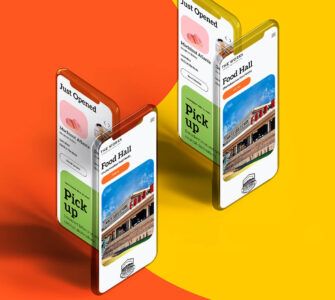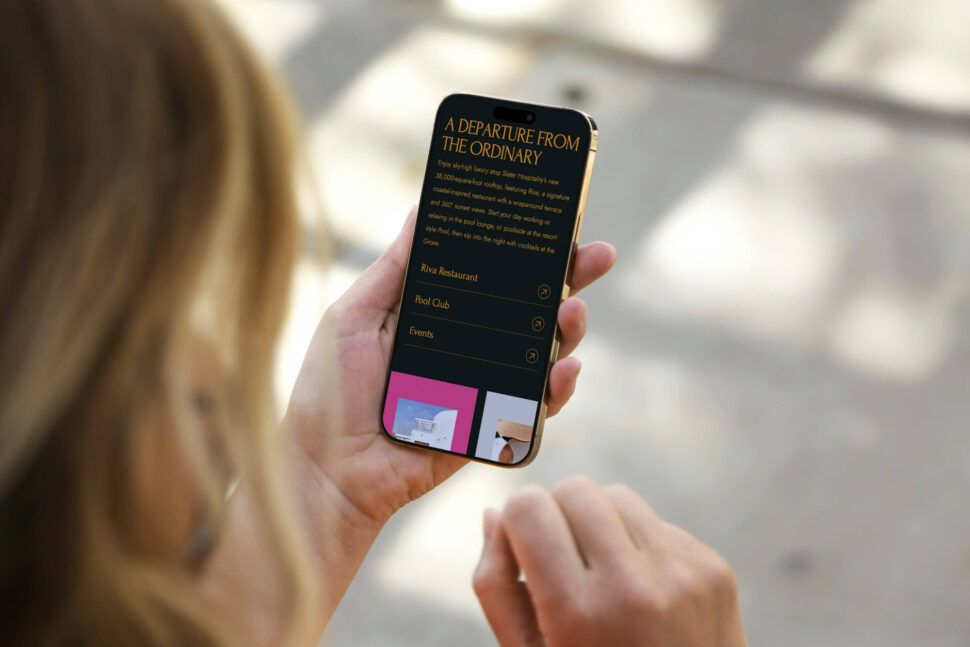
Brand Strategy Checklist for New Businesses
TLDR
Building a brand without a clear strategy is like trying to navigate without a map – you risk confusion, wasted effort, and missed opportunities. A solid brand strategy ensures your business is recognizable, consistent, and resonates with your audience. Here’s what you need to focus on:
- Define Your Purpose and Vision: Why does your business exist, and what future are you striving for? A clear purpose and vision guide your decisions and connect with your audience.
- Understand Your Audience: Go beyond basic demographics. Learn their emotions, challenges, and motivations to create a brand that feels personal and relevant.
- Craft a Memorable Identity: Develop consistent visual elements (logo, colors, fonts) and a clear verbal tone that aligns with your brand’s personality.
- Implement Across Channels: Ensure your website, social media, emails, and even customer service reflect your brand identity.
- Monitor and Adjust: Regularly track performance, gather feedback, and refine your strategy to stay aligned with your audience and business goals.
A strong brand isn’t just about logos or catchy slogans – it’s about creating trust and standing out in a crowded market. Start with these steps to build a brand that leaves a lasting impression.
Branding Checklist for Businesses: Review What You Already Have Versus What You Still Need
Define Your Brand Purpose and Vision
Your brand purpose and vision are the foundation of everything your business does. They guide every decision, ensuring your brand stays consistent and meaningful as it grows.
Think of your brand purpose as your “why” – the reason your business exists beyond just making money. Your vision, on the other hand, is your “where” – a clear picture of the future you’re striving to create. Together, they serve as a compass, keeping your brand aligned and helping you connect with customers who share your values.
When these elements are well-defined, they not only attract the right audience but also empower your team to make decisions that strengthen your brand over time.
Clarify Your Brand Purpose
Your brand purpose is the difference you make beyond selling a product or service. It’s what makes customers feel emotionally connected to your brand and gives them a reason to choose you over others.
To define your purpose, start by asking yourself some key questions:
- What meaningful problem does your business solve?
- How do your products or services improve your customers’ lives?
- What positive change do you want to bring to your industry or community?
Your purpose should reflect the core of who you are and what you do. For example, if you’re offering accounting software, don’t aim for something overly broad like “changing the world.” Instead, focus on how you simplify financial management for small business owners, making their lives less stressful.
Keep your purpose simple and specific. It should be so clear that anyone, even someone outside your industry, can understand it. A vague statement like “making the world better” sounds nice but doesn’t provide actionable direction for your brand.
Test your purpose by sharing it with others. If they immediately understand and resonate with it, you’re on the right track. If it leaves them confused, refine it further. The best brand purposes align with your audience’s values and solve problems they genuinely care about – not just issues you think they should care about.
Once your purpose is clear, it becomes much easier to envision the future you’re working toward.
Write a Clear Vision Statement
Your vision statement describes the future you’re aiming for – the world as it would look if your brand achieved its ultimate goals. It’s your long-term destination, typically spanning 5 to 10 years or more.
A strong vision statement strikes a balance: it’s specific enough to guide decisions but broad enough to allow for growth. It should inspire your team while giving customers a sense of the bigger impact you’re working toward.
Picture your business at its peak. How will your efforts change your industry or improve your customers’ lives? Write your vision as if you’ve already achieved it. For example, instead of saying, “We will become the leading provider”, say, “We are the trusted partner that small businesses rely on.”
Your vision should be ambitious yet realistic. It should push your team to think big without feeling unattainable. Aim for one or two sentences that are concise but packed with meaning – every word should add clarity or inspiration.
To test your vision, ask yourself: Does it help you make decisions? If someone suggested a new product or partnership, would your vision make it clear whether it’s the right move? If not, your vision might need more focus.
Lastly, your vision should set you apart. Without directly mentioning competitors, it should highlight what makes your approach stand out and why your version of the future matters to your audience.
When your purpose and vision are aligned, they create a powerful framework for all your branding decisions. Your purpose explains why you exist, and your vision shows where that purpose is leading you. Together, they form the backbone of a strong, focused brand.
Know and Connect with Your Target Audience
If you want your brand to truly resonate, you need to understand your audience inside and out. While having a clear purpose and vision is important, connecting with your audience is what solidifies every branding decision you make.
Think of your audience as the link between what your brand stands for and how it’s perceived in the world. Every design choice, every message you craft – they should all reflect your audience’s values. When you really understand who you’re talking to, your branding choices become sharper and more effective.
The most successful brands go beyond surface-level details like age or location. They dig deeper into the emotions, motivations, and challenges that influence their customers’ decisions. This kind of insight helps you create a brand that feels personal and relevant, rather than generic. To get there, you’ll need to define and study your ideal customer in detail.
Identify Your Ideal Customer Profile
Your ideal customer profile is more than just a list of demographics. Knowing that your audience is “women aged 25-40” is a start, but it doesn’t tell you how to connect with them emotionally or speak their language.
Start with the basics – demographics like age, gender, income, and location – but don’t stop there. Add psychographics: What are their values? Hobbies? What drives their decisions? For example, do they care more about convenience or affordability? Are they trendsetters who love trying new things, or do they prefer sticking with proven solutions? These deeper insights help you craft messaging that feels authentic and relatable.
To make this process more actionable, create detailed profiles for your top two or three customer segments. Give each one a name and treat them as if they’re real people. Imagine their goals, frustrations, preferred ways of communicating, and what success looks like to them. The more specific you get, the easier it is to tailor your branding to their needs.
If you’re in a B2B space, don’t forget to consider the decision-making process. Sometimes, the person using your product isn’t the one making the purchase. Understanding who influences those decisions allows you to create messaging that resonates with everyone involved.
Conduct Market Research
Market research is how you turn educated guesses into actionable insights. Even if you think you know your audience, research often uncovers unexpected details that can make a big difference in your branding.
Start by gathering direct feedback from your customers. Regular conversations and surveys can help you refine your messaging. Ask them about their challenges, why they chose your solution, and how they describe your product or service to others. Pay close attention to the words they use – these can often be more effective in your marketing than the terms you’d naturally pick.
You can also tap into online communities and forums to get unfiltered insights. Look for spaces where your audience gathers, like Reddit threads, Facebook groups, or industry-specific forums. Pay attention to the questions they ask, the frustrations they share, and how they discuss solutions like yours.
Competitor analysis is another valuable tool. By reviewing your competitors’ websites, social media, and customer reviews, you can identify gaps in the market. What are customers praising? What complaints keep coming up? This research helps you spot opportunities to position your brand differently.
Social media listening is another way to understand your audience’s language and interests. Use search functions to track conversations around relevant keywords. Notice which posts get the most engagement and what tone resonates with your audience.
For more structured insights, turn to surveys and interviews. Keep surveys focused and concise, targeting specific questions that will inform your branding. When conducting interviews, ask open-ended questions that reveal emotions and motivations. For example, ask, “What would make this the perfect solution for you?” This kind of question often uncovers insights that direct ones miss.
Finally, monitor your analytics to see what’s working. Which content gets the most engagement? Where do visitors spend the most time on your site? What calls-to-action are driving results? Use this data to fine-tune your approach.
Market research isn’t a one-and-done activity – it’s an ongoing process. Customer needs change, new competitors emerge, and trends shift. Set up systems to gather feedback regularly, whether through monthly calls, quarterly surveys, or consistent social media monitoring.
The insights you gather should directly shape your brand decisions. For instance, if your research shows your audience values transparency, make that a core part of your brand identity. If they prefer visual content over text, focus on strong visuals in your branding. By letting data guide your decisions, you’ll ensure your brand stays aligned with your audience and continues to evolve with their needs.
Build a Memorable Brand Identity
Once you’ve nailed down your audience and clarified your brand’s purpose, the next step is to shape how your brand looks and sounds. Together, your visual and verbal elements create a unified identity that helps people recognize and remember you.
The key here is consistency. Your visual design should reflect your brand’s personality, and your verbal communication should feel true to your company’s character. For instance, a fun and quirky startup might lean on bold colors and casual language, while a financial services firm would likely opt for sleek visuals and a professional tone. Neither is inherently better – it’s all about ensuring your brand’s personality shines through in every element. To make this happen, you’ll need clear visual and verbal standards.
Create Visual Branding Guidelines
Your visual identity is like a handshake – it’s the first thing people notice about your brand. This includes your logo, color palette, typography, and imagery style, all working together seamlessly across platforms.
Start with your logo. It doesn’t need to spell out what your business does – think about iconic logos like Apple’s or Nike’s. What matters is that it’s memorable, simple, and works well in different sizes and contexts.
Your color palette is another major player in shaping your brand’s identity. Choose a primary color that reflects your brand’s personality, then add a few complementary colors to round it out. Stick to three to five colors to keep things consistent, and document the exact color codes to ensure accuracy across all designs.
Typography plays a big role in how your messages are perceived. Select a primary font for headlines and another for body text, making sure they’re easy to read on all devices. If you’re using custom fonts, have backup options ready in case your primary choice isn’t available.
When it comes to your imagery style, consistency is key. Whether you prefer bright, natural photos or clean, minimalist illustrations, make sure your visuals align with your brand’s personality. This helps your audience instantly recognize your content.
To tie it all together, create a simple brand style guide. This guide should include examples of your logo, colors, fonts, and imagery style, along with clear dos and don’ts. It’s a valuable resource for designers, agencies, or new team members to understand your brand’s visual identity.
Set Up Verbal Branding Guidelines
Your verbal identity is just as important as your visuals. It’s how your brand’s personality comes through in the way you communicate, whether that’s in writing or speech.
Start by defining your brand voice. Choose three or four traits that capture how you want to sound – maybe you’re professional yet approachable, or bold and confident. Write these traits down and include concrete examples of how they translate into language.
Your tone can shift depending on the context, but it should always stay true to your brand voice. For example, you might use a more formal tone when addressing a customer complaint but switch to a celebratory tone for a social media milestone. The personality remains the same, but the tone adapts to the situation.
Develop messaging pillars – the core themes you want to communicate consistently. These could include your value proposition, company values, or the benefits you offer. Having these pillars in place ensures that everyone on your team tells the same story about your brand.
Create a brand vocabulary to define the words and phrases you use regularly, as well as those you avoid. For instance, do you refer to your audience as “clients,” “customers,” or “users”? Do you stick to plain language or occasionally use industry-specific terms? These decisions help maintain a consistent voice across all communications.
To make your verbal guidelines actionable, write sample content for different scenarios, such as social media posts, email replies, or customer service responses. These examples can serve as a reference for your team when they’re creating new content.
Maintain Consistency and Regular Reviews
Once you’ve established your visual and verbal guidelines, the real challenge is sticking to them. Consistency is what transforms individual elements into a recognizable and trusted brand.
Make sure your team uses the same colors, fonts, and messaging across all platforms. Train your staff on these standards and set up an approval process for important materials. Having a dedicated person or team review communications before they’re published can help catch inconsistencies.
Plan for regular brand reviews to keep your identity aligned with your goals and audience. As your business evolves, your brand might need adjustments. A good rule of thumb is to revisit your brand guidelines every 12 to 18 months or whenever you make major changes to your strategy.
Finally, measure how well your brand identity is working by tracking metrics like brand recognition, customer feedback, and engagement. If people seem confused about what you do or your brand feels forgettable, it might be time to refine your approach.
Consistency builds trust and recognition over time. The most memorable brands are the ones that stick to their guidelines and create cohesive experiences, time and time again.
Execute and Manage Your Brand Strategy
Having your brand guidelines established is just the first step. Now comes the challenge of bringing your brand to life across every interaction your customers have with your business. This stage involves consistent implementation, careful coordination, and ongoing maintenance to ensure your brand remains recognizable and impactful.
Launch Your Brand Across All Channels
Rolling out your brand is a continuous process that spans multiple channels. Start by creating a brand rollout checklist to ensure no touchpoint is overlooked. This includes everything from your website and social media to business cards and email signatures.
Your online presence should take top priority, as it’s often the first place customers encounter your brand. Update your website, social media profiles, email templates, and any other digital assets to reflect your logo, colors, and overall visual identity.
Email communications are easy to overlook but are a crucial part of your branding. Design branded email templates for various purposes, like customer service, newsletters, and sales. Use your brand colors, include your logo, and ensure the tone aligns with your brand voice.
For physical materials, think about items like business cards, letterheads, product packaging, and printed marketing materials. These should all align with your digital brand identity. If resources are limited, focus on the materials your customers interact with most frequently.
Customer service interactions provide an opportunity to showcase your brand’s personality. Train your team to use your brand voice in scripts for common scenarios. Whether a customer reaches out via phone, email, or social media, the experience should feel consistent with your brand identity.
To keep everyone on the same page, establish a brand asset library. This centralized resource should house approved logos, images, templates, and copy, so your team always has access to the correct materials. This reduces the risk of outdated or inconsistent branding.
Use Tools for Brand Management
Managing your brand across multiple platforms can get complicated, but the right tools can simplify the process and help maintain consistency.
- Digital asset management tools: Platforms like Canva for Teams or Google Drive (with organized folders) work well for small businesses. Larger companies might need more advanced solutions to store and distribute brand assets like logos, templates, and images.
- Social media management platforms: Tools like Hootsuite or Buffer allow you to schedule posts while keeping your messaging consistent. Many also let you save branded templates and maintain a regular posting cadence.
- Project management tools: Software like Asana or Trello can help you organize and track brand-related tasks, such as updating assets or coordinating campaigns across departments.
- Brand monitoring tools: Google Alerts is a free option to track mentions of your brand online. More advanced tools can measure sentiment and monitor how your brand is perceived on social media.
- Template systems: Create templates for presentations, social media posts, email newsletters, and other recurring materials. Tools like Canva, Adobe Creative Suite, or PowerPoint make it easy for your team to stick to your brand’s visual standards.
- Style guide management platforms: If your team is growing, consider investing in a platform that centralizes your brand guidelines. These tools make it easier to share updates and ensure new team members understand your brand standards.
Once these tools are in place, keep an eye on how your brand is performing and make adjustments as needed.
Track and Adjust Your Brand Strategy
Your brand should evolve alongside your business and your audience. Regularly assessing its performance ensures it remains relevant and effective.
-
✓
Brand awareness metrics:
Measure how well people recognize your brand by tracking website traffic, social media followers, and mentions. Surveys can also reveal whether customers understand your business and what makes it stand out.
-
✓
Customer feedback:
Reviews, testimonials, and social media comments offer valuable insights into how your audience perceives your brand. If their descriptions don’t align with your intended image, it’s time to refine your messaging.
-
✓
Engagement metrics:
Monitor social media interactions, email open rates, and website behavior to gauge how well your brand resonates. Declining numbers could indicate the need for a refresh.
-
✓
Quarterly brand reviews:
Regularly review your metrics, gather input from your team, and check for inconsistencies in how your brand is being applied. Use these reviews to update your guidelines and plan any necessary changes.
-
✓
Competitive analysis:
Keep tabs on how your competitors are positioning themselves. While you shouldn’t mimic their strategies, understanding the market can help you identify ways to stand out.
-
✓
A/B testing:
Experiment with different messaging, visuals, or formats to see what resonates best with your audience. Small, data-driven tweaks can lead to noticeable improvements.
Brand evolution should be a thoughtful process. Avoid making drastic changes too frequently, as this can confuse your audience. Instead, focus on gradual updates that keep your brand fresh while maintaining the familiarity that builds trust and loyalty over time.
Let’s build something unforgettable together.
Book a call with the Visual Soldiers team and discover how we can help refine your brand, elevate your identity, and create experiences that connect.
Book a Discovery CallFAQs
Defining your brand purpose and vision lays the groundwork for a strong and meaningful business. Your brand purpose goes beyond just making money – it’s about understanding the deeper “why” behind your business. What values do you represent? What problems are you solving? What kind of positive change do you want to bring to the world? This purpose should feel genuine and connect with your audience on a deeper level.
Once you’ve nailed down your purpose, it’s time to shape your brand vision. Think of this as your long-term game plan – a clear picture of what you want your business to achieve down the road. Your vision should be bold yet achievable, serving as a guiding light for your goals. It needs to be specific enough to measure progress and inspiring enough to keep your team motivated and aligned with your mission.
To genuinely connect with your audience, it’s important to dig deeper than basic demographics. You need to tap into their motivations, actions, and preferences. Here’s how you can do that:
- Psychographics: Look at what truly matters to your audience – things like their values, hobbies, and lifestyle. This helps you craft messages that feel personal and meaningful to them.
- Behavioral Insights: Pay attention to how customers engage with your brand. Are there patterns in their buying habits or online behavior? Use this information to fine-tune your products or services to better suit their needs.
- Direct Feedback: Don’t underestimate the power of simply asking. Surveys, interviews, and focus groups can give you direct insight into what your audience wants, what challenges they face, and what they expect from you.
By combining these approaches, you’ll gain a deeper understanding of your audience, allowing you to build a brand strategy that truly reflects their unique traits and desires.
Maintaining a consistent brand presence across all platforms and interactions is key to building trust and recognition with your audience. To start, develop clear and detailed brand guidelines that cover everything from logo usage and color schemes to fonts, tone of voice, and imagery. Ensure these guidelines are easily accessible so your team can refer to them whenever needed.
Keep all your brand assets – logos, templates, marketing materials – in a centralized location. This helps ensure they’re used properly and consistently. It’s also a good idea to provide regular training for employees on why consistency matters and how they can incorporate these standards into their work. Finally, schedule periodic reviews of your platforms to confirm that your messaging, visuals, and tone all align with your brand identity.







